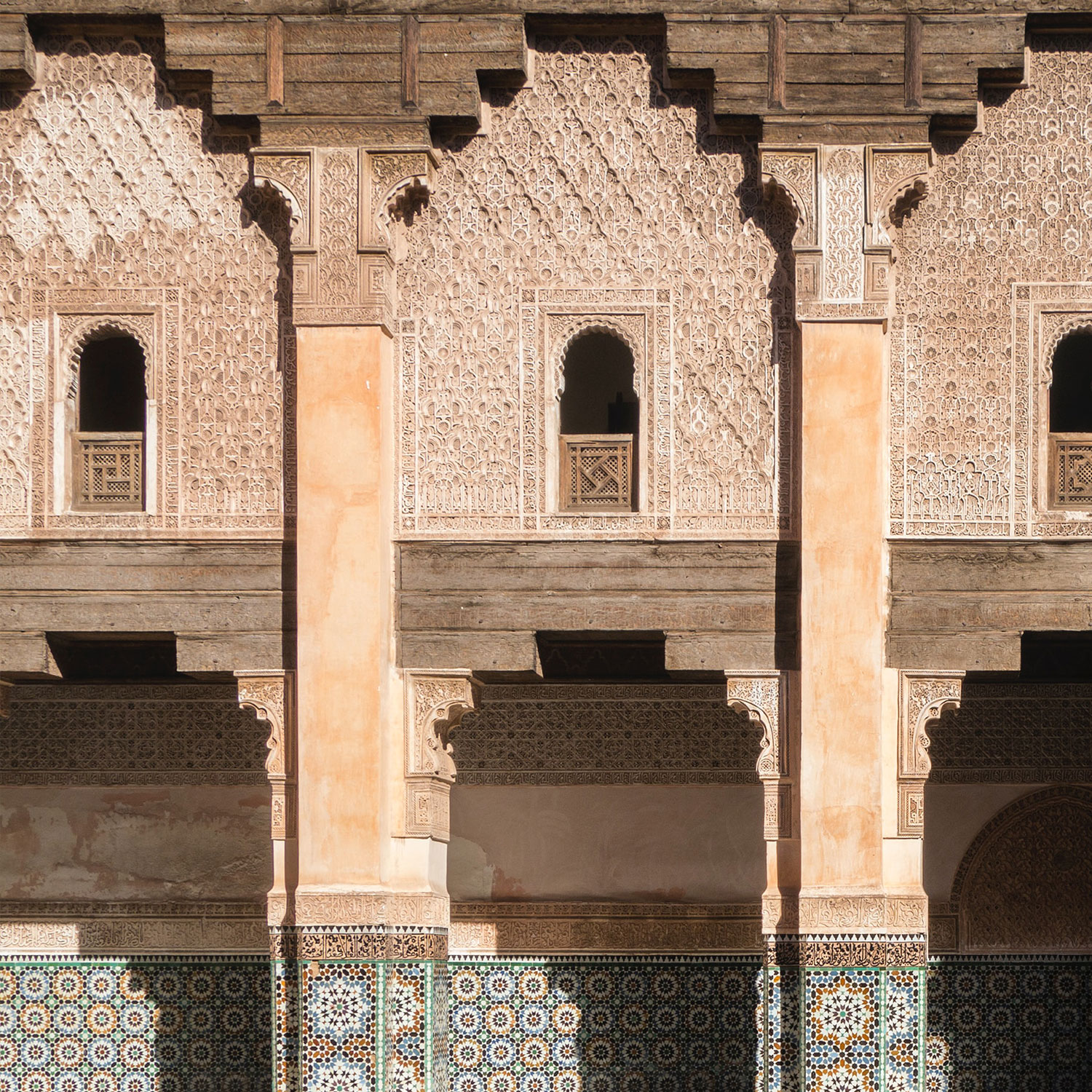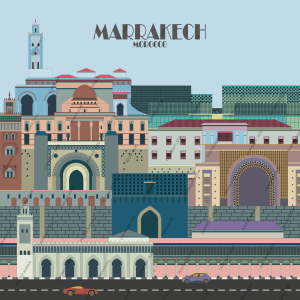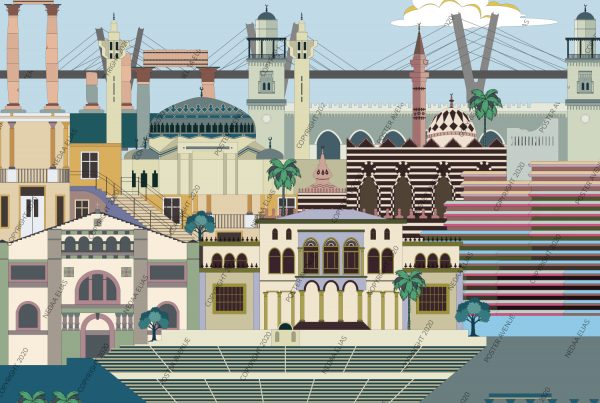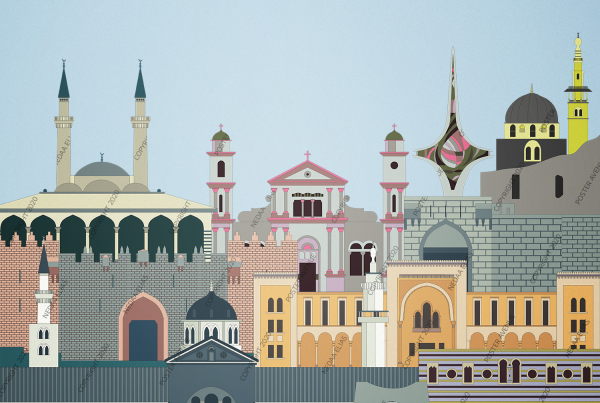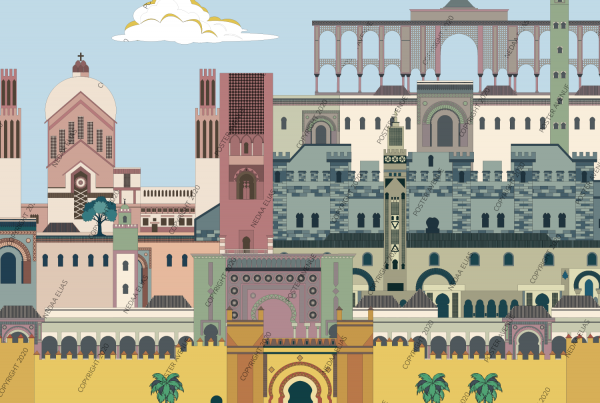Throughout history, Morocco has been impacted by numerous civilizations, notable and exclusive components may be observed through the architecture gallery of the country, nevertheless, the most noticeable style is Moorish architecture. What differentiates Moroccan architecture isn’t just its remarkable mix of various design components but also the excellent highlights of every one of its traditional and modern buildings. A market town since it was established in the 11th century, Marrakech has always been an appealing junction for merchants and explorers. However, nowadays, Morocco’s dubbed “Red City” has advanced from a stylish bohemian retreat for recognized tastemakers to a worldwide location welcoming visitor with a cosmopolitan feeling of extravagance. The city’s shops have gotten progressively urbane, while frequently reflecting a clear sense of glamour and preserving a colorful history.
Located inside Marrakech’s medina, Djemaa el-Fna is a profoundly well-known destination to discover the bustling environment of an old Moroccan city. Walking through the main square and mingling within the small alleys of the old medina provides an authenticity to the unique atmosphere lasting from centuries ago – an element that is a characteristic of old Islamic periods. Within this crowded complex, the Koutoubia Mosque rises as an orientation landmark with its seventy-seven meters high minaret. Built during the twelfth century, the current mosque was commissioned by the Almohad dynasty, who rebuilt the old structure, as it failed to face the qibla direction. The name refers to the Arabic “al-Koutoubiyyin” which means “booksellers” since the zone was once populated with books and manuscripts’ merchants.
Koutoubia Mosque features rose-colored shade, which is particularly distinctive among the buildings of Marrakech. The ancient reconstructed mosque represents Moorish architecture with its stonework and grounding arches. The ornamentation incorporates curved window arches, a band of ceramic inlay, pointed merlons, and decorative arches. The mosque is surrounded by an enormous plaza with gardens the houses different types of trees (palms, orange, olives), bloom beds, wellsprings, and seats consistently. Its rectangular minaret is archetypal of Moorish design, topped with an artistic strip, a minor tower, and 4 copper balls shrinking in size. The north-western side of the minaret contains ruins and water cisterns belonging to the Almoravid royal residence which is believed to have occupied this spot earlier.
Similarly, the Kasbah Mosque, also called Moulay El Yazid Mosque, is one of the city’s most established mosques. The rose-tinted minaret with its band of green and blue tiles provides similarities with the Koutoubia Mosque. The minaret is likewise topped with a spire and orbs. Adjacent to this mosque lies Bab Agnaou which is the main gate of the fortified district housing the royal citadel (kasbah) and the royal palace. With its lavish decoration, the gate reflects Moorish architecture decorative as well as defensive components. It features a giant horseshoe entrance arch, semi-circular carved arcs, Qur’anic inscription, and floral patterns. Inside the same Kasbah district, stands El Badi Palace, the ‘Palace of Wonder’. With its simple reddish structure, interior gardens, gigantic water features, the architectural ensemble is a reflection of the 16th century Saadian dynasty. Built in the same era, Bab Doukkala Mosque is located next to one of the gates of the old city walls, it is supported by monumental arches and a significant portal.
A more recent palace, splendid in structure, built in the nineteenth century by the Grand Vizier Si Moussa, is the Bahia Palace or Palais de la Bahia (literally translating to ‘Palace of the Brilliant’ or ‘Palace of the Beautiful’). Referring to its name, the astonishing palace and its numerous surrounding gardens were deliberately erected to be the greatest palace. Decorated in traditional Berber-Arabesque ornaments and motifs, the overwhelming historic structure supposedly includes 150 rooms, complemented with a harem, arranged close to the serene Court of Honor. The rooms are designed in Andalusian style, with colored stained-glass windows and carved furnishings of wealthy dark wood. Beyond the entrance, a huge riad is located. Gardens are framed with Morocco’s symbolic citrus trees. Nowadays, the palace opens its doors for the public every day and hosts events on special occasions, for example, the Marrakech Biennale, which is a significant Trilingual Arts festival and the first of its nature in the region.
Moving on to a different architectural style, the Theatre Royal of Marrakech is a Roman-inspired building in the Guéliz district. Regarded as a new stylistic addition to the city, the theatre was erected in 2001. The structure is topped with a large cupola and the entrance is highlighted with sleek roman columns. Likewise, Marrakech City Hall, known as ‘Ksar Al baladia’, is another paradigm of modernist intervention in Moorish architecture. It features a minimalistic façade, an entrance flanked by simple roman columns, topped with a slanted green roof. Appealing both inside and outside, the current Marrakesh Railway Station was finished in the late 2000s. It mixes traditional Moorish style with modern-day architecture. The central atrium is naturally lighted and ventilated, whereas the main façade is ornamented with modernized traditional motifs.
Lastly, the traditional Moroccan vernacular architecture was reinterpreted in the Musée Yves Saint Laurent Marrakech, in a way that establishes a new vernacular. Dedicated to exhibiting the work of the famous French fashion designer, the museum was built in 2017. From the external viewpoint, the structure is made out of cubic shapes decorated with bricks, this provides the visual image of fabric threads. From the internal viewpoint, the finishing creates the sense of a luxurious haute-couture, being shining, silky, and smooth. The structure merges well with its surrounding environments, it is built of terracotta, concrete, and an earthen colored terrazzo with Moroccan stone fragments. The terracotta bricks that decorate the exteriors are produced using Moroccan earth and delivered by a nearby provider. The terrazzo utilized in the building finishing is composed of a mix of local stone and marble.
With no tall skyscrapers, nor giant commercial malls, nor high-tech structure, Marrakech is one of the rare cities that preserves its charm featuring the most prominent local architecture styles.



